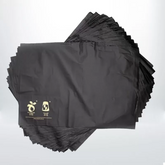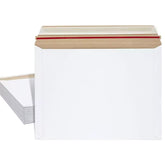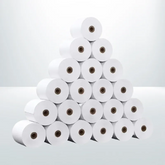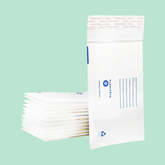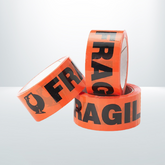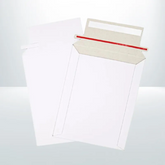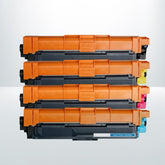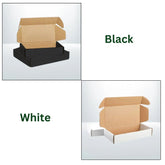Shipping items in cardboard boxes is a common practice for businesses and individuals alike. However, ensuring that the boxes are securely tied is crucial to prevent damage during transit. In this guide, we will discuss how to properly tie cardboard boxes for shipping to ensure that your items arrive safely at their destination.
Why Properly Tying Cardboard Boxes is Important
When shipping items in cardboard boxes, it is essential to properly tie them to prevent the contents from shifting during transit. Our cardboard boxes can help to protect fragile items from damage and ensure that the box remains securely closed. Additionally, properly tied boxes are less likely to open or become damaged during handling, reducing the risk of lost or damaged items.
Choosing the Right Materials for Tying Cardboard Boxes
When tying cardboard boxes for shipping, it is important to choose the right materials to ensure that the box remains securely closed. Some common materials that can be used to tie cardboard boxes include:
- Packing tape: Packing tape is a strong and durable material that is ideal for securing cardboard boxes. It is important to choose a high-quality packing tape that will not easily tear or break during transit.
- Rope or twine: Rope or twine can also be used to tie cardboard boxes for shipping. This material is ideal for larger boxes or items that require additional support.
- Stretch wrap: Stretch wrap is a versatile material that can be used to secure boxes of all shapes and sizes. It is ideal for wrapping multiple boxes together or securing boxes with uneven shapes. You can find a variety of pallet wraps on our website.
Step-by-Step Guide on How to Tie Cardboard Boxes for Shipping
Follow these simple steps to properly tie cardboard boxes for shipping:
- Close the box securely: Before tying the box, ensure that all flaps are folded down and the box is properly closed. This step is crucial to prevent items from falling out or shifting during transit.
- Wrap the tape around the box: Use high-quality packing tape to wrap around the box in both directions. Ensure that the tape is tightly secured to create a strong seal. Overlapping the tape can provide added strength and stability to the box.
- Tie the rope or twine securely: If using rope or twine to tie the box, wrap it around the box in a crisscross pattern. This method helps distribute the tension evenly and prevents the box from opening. Be sure to tie a secure knot to keep the box tightly closed.
- Secure the stretch wrap tightly: When using stretch wrap, wrap it around the box several times to create a tight seal. Pull the wrap tightly to prevent any shifting of the box contents during transit. The tightness of the wrap can help maintain the integrity of the box and protect the items inside.
Tips for Tying Cardboard Boxes
- Choose high-quality materials: Selecting the right materials is crucial in ensuring that your box remains securely closed during transit. Opt for high-quality packing tape, rope, twine, or stretch wrap to provide the necessary strength and durability needed to withstand the rigors of shipping.
- Double-check your knots: Before sending your package off for shipping, take the time to double-check your knots. Ensure that they are securely tied and will not unravel during transit. A simple yet effective way to prevent any mishaps during shipping.
- Label your package: Properly labeling your box is essential for ensuring it reaches its intended destination safely. Make sure to clearly mark the box with the recipient’s address and any special handling instructions. This small step can help prevent misdeliveries and ensure the smooth delivery of your package. Check out our address labels for easy labeling.
- Cushion fragile items: If you are shipping fragile items, it is important to provide adequate cushioning within the box. Use bubble wrap, packing peanuts, or crumpled paper to protect delicate items from damage during transit. Proper cushioning can help absorb shock and prevent breakage. Consider using our bubble mailers for additional protection.
- Reinforce the box: For added security, consider reinforcing the box with additional tape or strapping. This extra layer of protection can help prevent the box from opening or becoming damaged during handling.
- Consider the weight of the package: Be mindful of the weight of your package when tying cardboard boxes for shipping. Overloading a box can lead to structural failure and increase the risk of damage during transit. Ensure that the box is securely tied and can support the weight of its contents.
- Seal all seams: To prevent the contents from spilling out or becoming damaged, make sure to seal all seams of the box. Use extra tape along the edges and corners to reinforce the seal and prevent any potential openings during shipping.
Common Mistakes to Avoid When Tying Cardboard Boxes
When tying cardboard boxes for shipping, there are a few common mistakes that you should avoid to prevent damage during transit:
- Using insufficient tape: Using too little tape can result in the box opening during transit. Make sure to use enough tape to create a secure seal.
- Not tying the box securely: Ensure that the box is securely tied using rope, twine, or stretch wrap to prevent the contents from shifting during transit.
- Overpacking the box: Avoid overpacking the box as this can cause the contents to shift and the box to become damaged during handling.
- Not labeling the box properly: Make sure to clearly label the box with the recipient’s address and any handling instructions to prevent confusion and ensure timely delivery.
- Ignoring weight restrictions: Be aware of weight restrictions for shipping services and make sure not to exceed the maximum weight limit to avoid additional fees or shipping delays.
- Using inappropriate packaging materials: Choose sturdy and appropriate packaging materials such as bubble wrap, packing peanuts, or foam inserts to protect fragile items from damage during transit.
- Neglecting to reinforce weak spots: Reinforce weak spots in the box such as corners or seams with additional tape or padding to prevent them from breaking open during handling.
- Failing to fill empty space in the box: Fill any empty space in the box with cushioning materials like newspaper or air pillows to prevent the contents from shifting and getting damaged.
- Storing the box incorrectly: Store the box in a dry, cool place away from direct sunlight and moisture to prevent the packaging materials from deteriorating and the contents from being damaged.
- Not checking shipping restrictions: Make sure to check for any shipping restrictions or prohibited items before sending the box to prevent delays or rejection by the carrier.
Conclusion
Tying cardboard boxes for shipping may seem like a simple task, but it is essential to ensure that the boxes are securely tied to prevent damage during transit. By following the steps outlined in this guide and using the right materials, you can safely ship your items in cardboard boxes with confidence. Remember to double-check your knots, label the box, and avoid common mistakes to ensure that your items arrive safely at their destination. For more packaging supplies in Melbourne, shop from our website today to get exclusive discounts.









